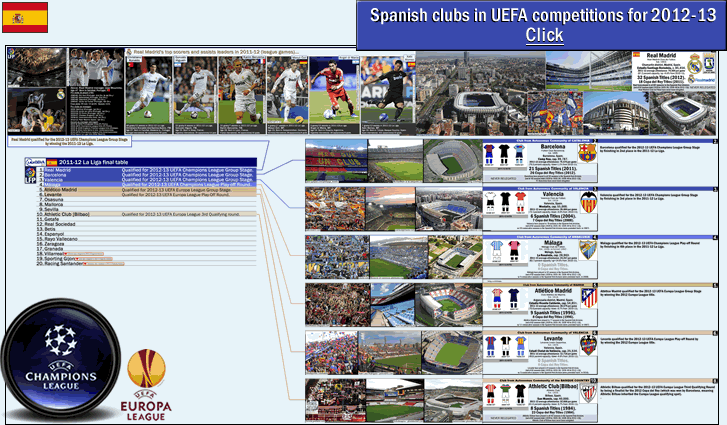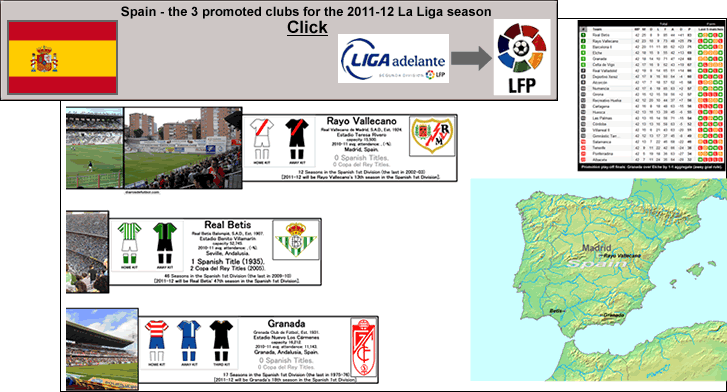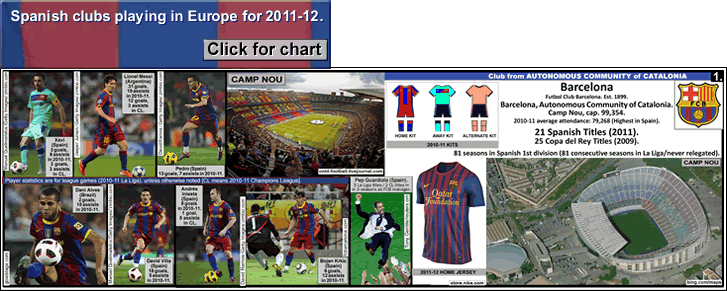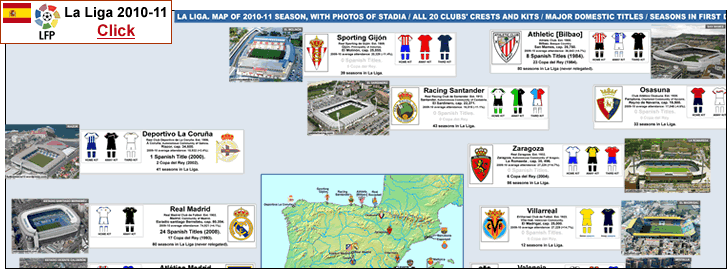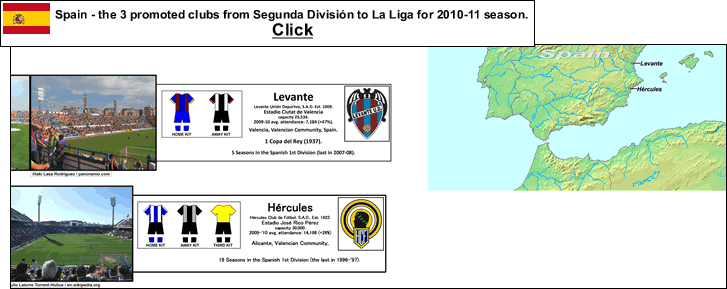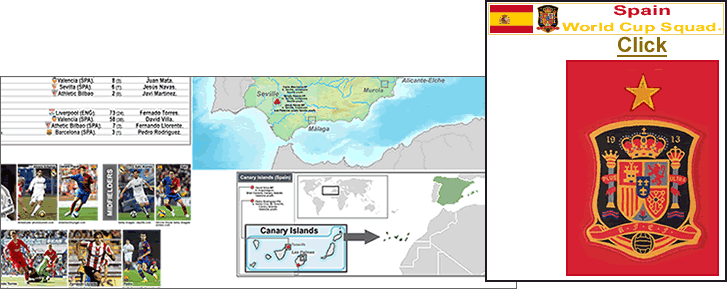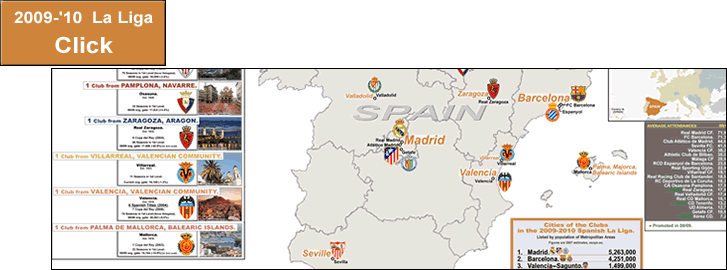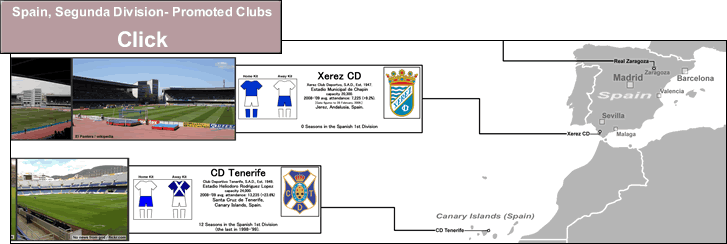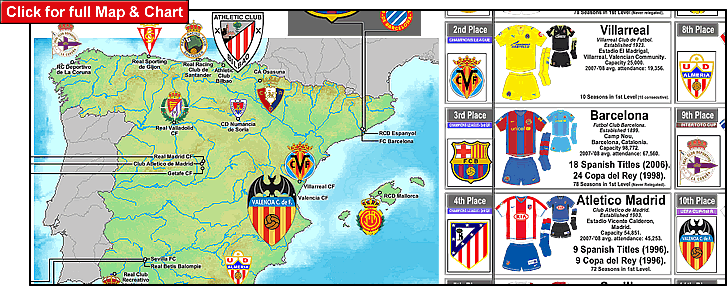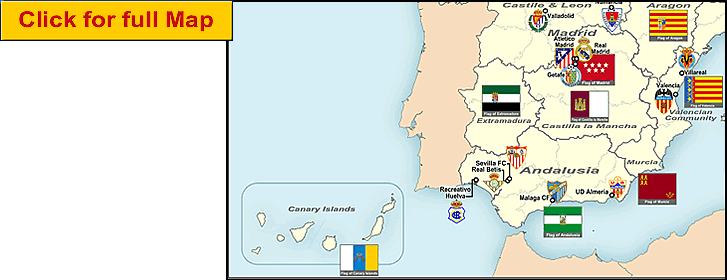
…
…
Note: to see my latest post on Spanish football, click on the following, category: Spain.
…
The autonomous communities of Spain underscore how decentralized the country is. In fact, the central government of Spain accounts for just 18% of public spending, while 38% is allocated to the regional governments, 13% to the local councils, and 31% to the social security system {see this}.
The 17 autonomous communities are the first level of political sub-division in Spain. The roots of the autonomous community system can be traced to the late nineteenth century, following Spain’s defeat to the United States in the Spanish-American War. Many viewed the country’s highly centralized political and economic systems as antiquated and unworkable. The Encyclopaedia Britannica states: “Groups in Catalonia, the Basque region, and Galicia who wanted to free their regions from the ‘Castilian corpse’ began movements for regional autonomy, and a number of influential regional political parties consolidated their strength.” {see this}.
This ultimately led to the Second Spanish Republic, established in 1931 {see this}. The push for regional autonomy, of course, was set back by the outcome of the Spanish Civil War (1936-1939), and the nationalist and Fascist dictatorship of Genralissimo Francisco Franco (from the end of the civil war to his death in 1975).
In 1978 the framework was established for the autonomous communities. The three regions which had long pushed for more autonomy or even outright independance… Catalonia, the Basque Provinces, and Galicia… were designated “historical nationalities”. These three regions were permitted to gain autonomy through a rapid and simplified process: Catalonia and the Basque Country by 1979, and Galicia by 1981. By May, 1983, the entire country was divided into the 17 autonomous communities. Two colonial possessions in Africa, on the southern Meditterrranean coast, were designated autonomous cities in 1995: Ceuta {see this} and Melilla {see this}.
Andalusia (Andalucia in Spanish ) is the most populous, and second largest autonomous community. The roots of the green and white in the Andalucian flag can be traced all the way back to the late 12th century, during the battle of Alarcos (1195) {see this (from the Historical Flags site) }. This was during the Almohad Dynasty (1121-1269) {see this}. The Reconquista gradually pushed back the Moorish domination of southern and central Spain until all that remained by 1390 was the kingdom of Granada {see this time-lapse map: Progress of the Reconquista}. The Emirate of Granada {see this} existed for 264 years, in the latter decades as a vassal to Castile. Control of the region was surrendered to King Ferdinand II and Queen Isabella (monarchs of Castile) in 1492. The flag for Andalucia maintains the green of the Moorish past, and indeed the white is for the Uymayid Empire, of which Andalucia was a part of prior to the Reconquista {again, see this, specifically the 3rd proposed flag listed (ie, the flag of Andalusia)}. The green bands represent the Guadiana and Guadalquivir Rivers.
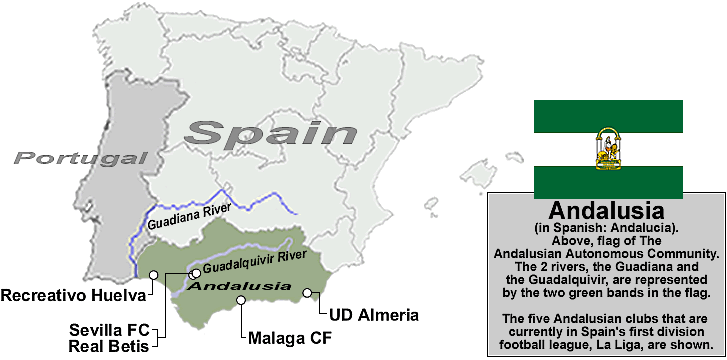
There are 5 clubs from Andalusia currently in Spain’s top football league, the Liga Futbol Profesional Primera Division (aka “La Liga”). They are Real Betis, and Sevilla FC (both from the city of Sevilla); RC Recreativo de Huelva, from western Andalusia; Malaga CF; and UD Almeria, from eastern Andalusia.
Spain’s capital, Madrid , is an autonomous community of the same name. There are 3 clubs currently in La Liga from Madrid: Real Madrid CF, Atletico de Madrid, both from Madrid proper; and Getafe CF, which is just south of the central city. Real Madrid evokes the concept of a strong centralized Spain with the mulberry band of the Region of Castile (since 2001, the color of the band in the crest has been altered slightly to a more bluish-purple). Historically, the Kingdom of Castile and its people were considered to be the main architects of the Spanish State, through expansion to the south (with the expulsion of the Muslim Moors), and the annexation of their smaller eastern and western neighbors (through wars, royal marriages, and assimilation). Franco supported Real Madrid, indeed, so did much of the entire upper-echelon of the central government in the era from post-WW II to the mid-1970s. However, there is little evidence that Franco or the government had any comprehensive influence on the success of Real Madrid, as did regimes towards chosen clubs in other countries (such as East Germany) which similarly suffered under corrupt and repressive governments. That being said, it is unquestionable that Franco had a hand in forcing Barcelona to give up claims that they had the right to sign the Argentinian midfielder Alfredo di Stefano in 1953 {see this, specifically the bottom half of the third paragraph}. Di Stefano went on to lead and captain Real Madrid throughout their glory days in the mid 1950s and early 1960s, and he deserves credit for being a big part of what made Real Madrid the huge club that they are today.
Catalonia (Catalunya in Catalonian ) is the second most populous autonomous community. Here is Wikipedia’s page on Catalonia {Click here}. FC Barcelona incorporates the Catalan flag in its crest, and the club considers itself the ‘national’ football club of Catalonia. RCD Espanyol has about one-third the fan base as FC Barcelona (2007-08 average attendances: FC Barcelona, 67,560 / RCD Espanyol, 21,870). Espanyol’s full name is translated as Royal Spanish Sports Club of Barcelona. The club used the Catalan spelling of its name from 1931 to 1939, but was then forced to change back to the Spanish during the Franco era as part of a central government repression on regionalist identity. In 1995, the official club name was changed again, back to the Catalonian language.
The rivalry between Real Madrid and FC Barcelona has a huge underlying subtext…that of the overall tension between a strong central Spainish state (as represented by Real Madrid) versus the push for autonomy and/ or independence of the regions (as represented by FC Barcelona). And there is a further element to this, as pointed out in the following article at insidespanishfootball.com, ‘To determine whether someone favors right-wing or left-wing politics in Spain can be found out by asking them which is their second favorite team. If they answer ‘Real Madrid’ they are right-wing and if they answer ‘FC Barcelona’ they are almost certainly left-wing.’(quote from ‘Politics – Deep in the veins of Spanish football‘ at insidespanishfootball.com).
The Valencian Community is located on Spain’s eastern Mediterannean coast, and is comprised of three provinces, two of which can boast of a club currently in La Liga. The province of Valencia is home to Valencia CF. Valencia are the third-most supported club in Spain, after Real Madrid and FC Barcelona. Valencia’s club crest features the colors of the Valencian flag (the bat is also in the city’s coat of arms {see this}). Levante UD also hail from the city of Valencia; they were relegated from La Liga in the spring of 2008. The province of Castellon is home to Villarreal CF. This club’s nickname is El Submarino Amarillo (the Yellow Submarine), for their all-yellow kit. Villarreal also has the Valencian flag’s colors in their crest. Villarreal are currently near the top of the table, remarkable for a club whose hometown is not on most maps (the population of Vila-real is around 49,000). The southern-most province of the Valencian Community is Albacete, whose club of the same name were last in the top flight in 2006.
Castile and Leon (in English: castle and lion) is the largest autonomous community in size. It is also one of the largest subdivisions in the European Union. The name castile has its origins in the many castles that defended the region in the Middle Ages during the Reconquista. Two clubs from this subdivision are currently in La Liga: Real Valladolid, and the small club from Soria called CD Numancia.
Galicia is in northwest Spain: Deportiva La Coruna are from here. Celta Vigo, who were just relegated last spring, also call this region home.
Asturias is east of Galicia: home of Real Sporting de Gijon. This club was just promoted, but it has a considerable fan base, and has spent 37 seasons in the first division.
Cantabria is east of Asturias. Real Racing Club de Santander call this region home.
The Basque Country currently has one club in La Liga: Athletic Bilbao. This storied, never-relegated club only signs players from the 4 Basque provinces in Spain: Biscay, Guipuzcoa, Alava, and Navarre, plus the 3 Basque provinces in France: Labourd, Soule, and Lower Navarre. Real Sociedad are also from the Basque Country; they were relegated in 2007. Likewise, Deportivo Alaves, who were relegated in 2006. [Likewise SD Eibar, who won promotion to La Liga for the first-time-ever for 2014-15, becoming the smallest club to ever play in the Spanish 1st division (with crowds in the 3-K-range when promoted).]
Navarre is not officially part of the Basque Country, but a map of predominantly Basque-speaking areas of the region shows how strong the Basque influence is here, especially in the north of Navarre {see this}. CA Osasuna hail from this region, in the city of Pamplona.
Thanks to the contributors to the pages in Wikipedia that were referenced, and to the Encyclopaedia Britannica on-line. Thanks to David Goldblatt, and his book “The Ball Is Round, A Global History of Football”, published by Penguin Books. Thanks to the Flags of the World site {Click here}. Thanks to the Albion Road site {the link is set to La Liga clubs…Click here}.

